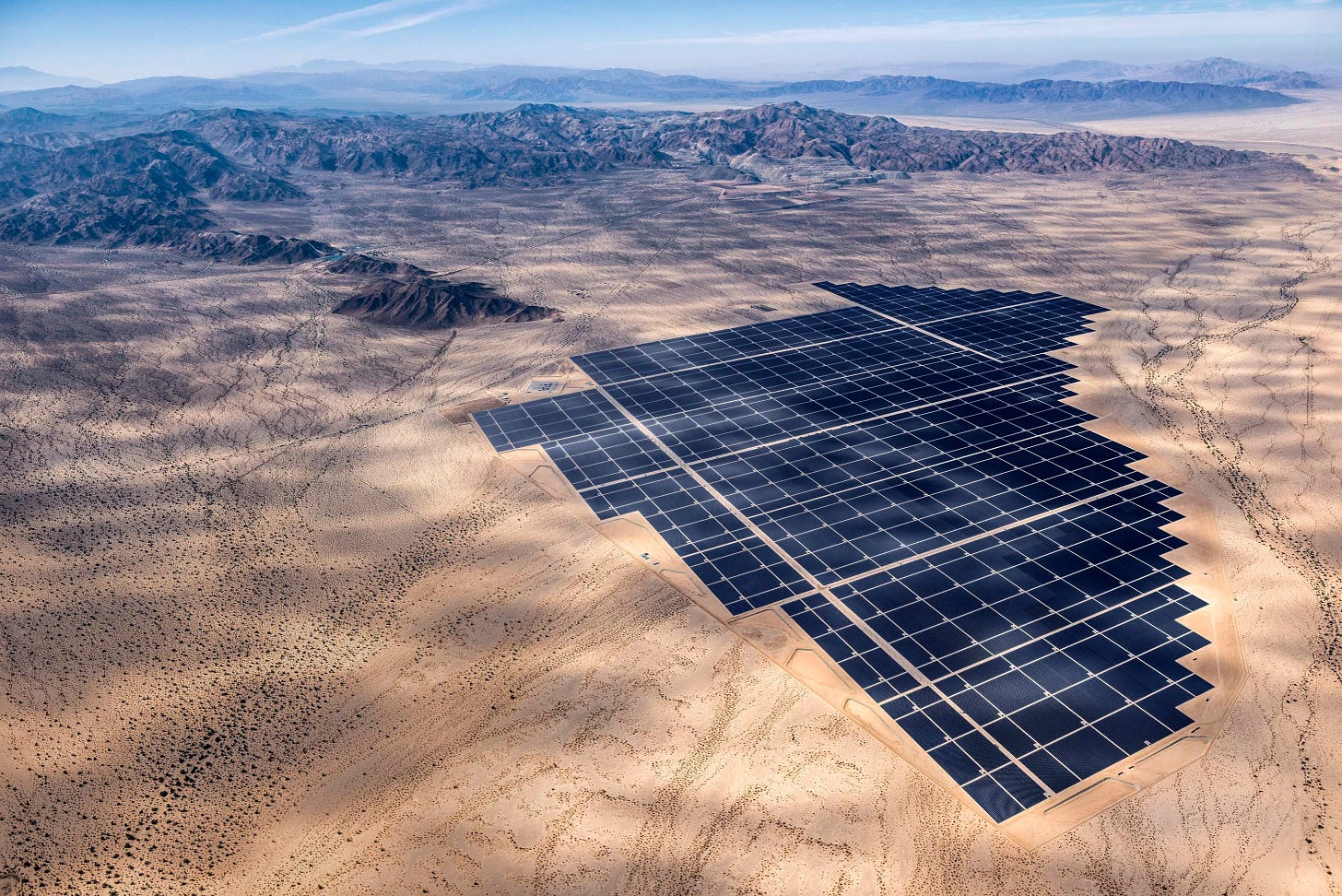Photosynthesis or Photovoltaics?
Why environmentalists sue renewable energy projects

I often see commentators express surprise that environmentalist groups oppose renewable projects in their own bioregions. Don’t environmentalists want to fight climate change? Don’t they know that humanity must rapidly scale up solar, wind, and storage to reduce global greenhouse-gas emissions? Why, then, do they keep suing the very projects that they ought to applaud?
Because a movement that agrees in the abstract fractures in the concrete. When climate projects land in actual ecosystems, enthusiasm transforms into outrage. The clash lays bare a paradox at the heart of today’s uneasy marriage between old-school environmentalism and modern climate activism. The first esteems nature as a good in itself; the second values nature only insofar as it can be used to fight climate change.
No one states the divergence so directly, but this framework illuminates what might otherwise seem to be a contradiction. Environmentalists sue new solar farms because they love desert tortoises and Joshua trees more than they fear rising carbon dioxide levels. Living, breathing, fertile Mother Earth is far preferable to the mechanized polysilicon hellscapes that a 100 percent-renewable future would entail.
Climate crusaders, by contrast, act out of an unspoken anthropocentrism. Net-zero must be achieved—or the world, and humanity with it, goes to hell. If life itself is at risk of extinction, then a little local destruction is the price of planetary salvation. Even if that means turning rainforests into soybean rows to fill sustainable-aviation fuel tanks. The ends justify the means.
This is anathema to the ecological purist. Of what value is averting climate catastrophe if we extinguish the very biodiversity that makes Earth so beautiful? Why pave the desert with glaring mirrors to power cities already out of balance with the planet? The trade-off is simply not worth it, least of all when the motive is mere human welfare.
The lawsuits, then, should surprise no one. They are the logical outcome of opposed perspectives on the value of biodiversity, flowing from two rival metrics: biodiversity to be maximized versus greenhouse gas emissions to be minimized. When those goals collide, each side defends the value it deems more holy—at the expense of the other.


